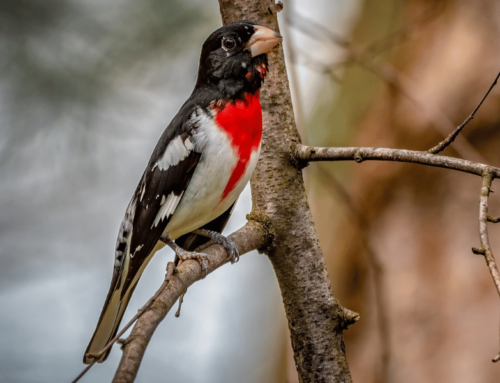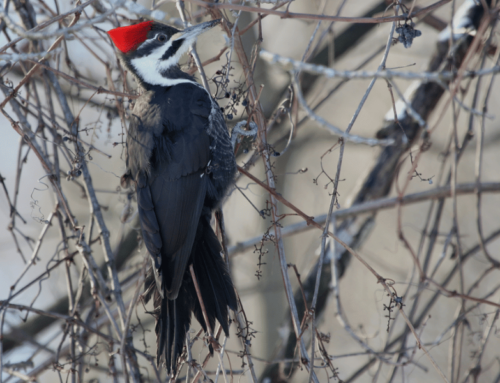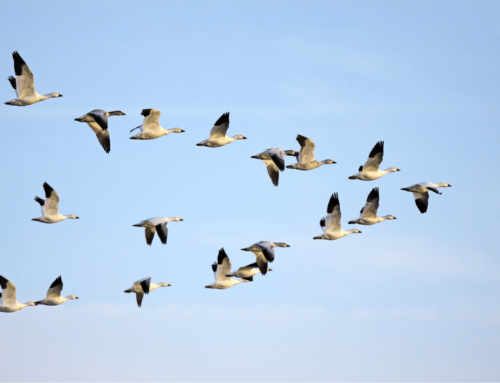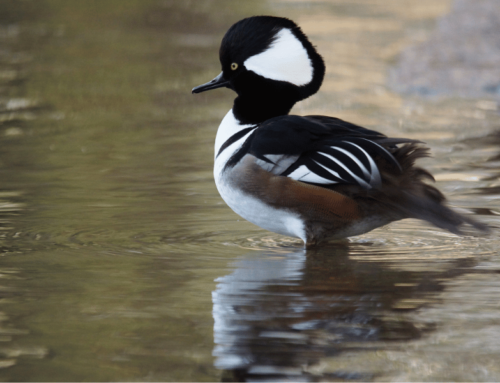Birdwatching is a great hobby that can lead to having many great opportunities to take great photos. There are seemingly endless ways to get good photography when going birdwatching.
This post is all about great birdwatching photos to inspire your photography and future birdwatching.

1. Great Green Macaw
This photo shows a Great Green Macaw in its natural habitat in Costa Rica. Many are familiar with the other macaws of South America such as the Scarlet Macaw and the Hyacinth Macaw but this one is pretty in its own right.
This bird is only one among many that can be found in Costa Rica. Currently around half of Costa Rica is rainforest. There are tons of places to find beautiful birds just like the Great Green Macaw in this country. This destination would make a great place to visit to find and photograph birds.

2. Snowy Owl
This picture features a snowy owl, which is possibly the most recognizable owl. You can probably tell how it got its name. It’s the only type of owl with mostly white feathers. Less commonly, they are called polar owls or white owls. Its white plumage allows it to camouflage perfectly in the arctic regions where it’s endemic. This snowy owl is sitting in the snow and taking in its surroundings.
You can find these gorgeous birds throughout Russia, Scandinavia, Canada and Alaska.

3. Adelie Penguin
This photo shows an Adelie Penguin in mid-jump between two ice floes. It’s a great action shot showing one of the unique actions that only penguins regularly partake in.
Penguins, including the Adelie Penguins in this photo, are found in the Antarctic. So, there’s no shame in not going out to Antarctica to get a similar photo as this. Then again, getting a good photo of a penguin may something to put on your bucket list.

4. Japanese Red-Crowned Cranes
This photo is simply gorgeous! These two Japanese Red-Crowned Cranes are dancing together in Hokkaido. It’s clearly a cold day, as you can see their breath. Cranes dance to find mates or to strengthen the bond between mated pairs. This pair appears to be a mated pair dancing in the Japanese winter.
Getting a great photo like this isn’t easy but it’s not hard either. During moments when birds are dancing or engaging in any activity, you can get these shots by taking lots of photos. A moment like this can pass by in less than a second. If you take lots of photos you can take a shot like this purely by accident.

5. Sword-Billed Hummingbirds Dueling
No, this photo is not edited. The bills on these birds are actually that long. In fact, the sword-billed hummingbird is the only bird with a bill longer than the rest of its body.
This photo features two of them fighting in the forests of Ecuador. These birds use their long bills to get nectar from flowers with hard-to-reach nectar. They also fight off other hummingbirds with them.

6. Osprey catching a trout
This photo shows an osprey pulling a rainbow trout directly out of the water. Ospreys are masters of the fishing world and are well adapted to catch fish regularly.
If you’re not familiar with this species, be aware that this species isn’t an eagle or hawk. Despite how similar it looks to other raptor families, taxonomists aren’t exactly sure where to put it. For now, it’s in its own family.
Either way, it’s a great candidate for action shots such as this.

7. Male Bluebird feeding baby
Here we have a male bluebird feeding his baby. This bird has in recent years made somewhat of a comeback in North America. After dealing with rough competition from the invasive European Starling, their numbers declined. Thankfully, it looks like this trend has reversed. It should be easier now to get a glimpse of these beautiful birds than in previous decades.

8. Snow Geese at Sunset
This amazing shot shows a large flock of snow geese at sunset. This North American species comes in two different morphs: white and dark (referred to as the “blue morph”). They’re named after their white morph. You can’t really tell the what morph these geese are due to the lighting unfortunately but that doesn’t change how stunning this picture is.
These birds don’t have the most widespread range until you incorporate their migration range. If you’re looking for them to take a picture similar to this one, your best bet is to wait until migration season (spring and fall). Other migrating geese can get you a similar shot as well.

9. Migrating Birds
On the topic of migration, this shot features a flock of birds during migration. I’m honestly not sure of what type of bird is featured here, however this photo features a flock of birds with a beautiful background. The full moon and the pink and blue sky – during dawn or dusk – is simply perfect.

10. White-Throated Dipper
This great photo features a white-throated dipper hanging out on a branch over a rushing stream. This bird can be found from western Europe to Scandinavia and all the way to the Indian subcontinent in Asia. This species is right at home next to a rushing river.
They are well adapted to diving into moving water and catching aquatic insects, fish and amphibians. The white-throated dipper can “fly” underwater, where it can effectively chase down its prey. Speaking of birds underwater…

11. Cormorant chasing fish underwater
If you’ve never seen a cormorant before, I would describe it as looking somewhere between a duck and an eagle. Cormorants, much like white-throated dippers, can dive underwater and chase down their prey as needed. They are capable of diving over 100 feet underwater when needed.
This photo shows a cormorant going after a school of fish. If you’re planning on getting a shot like this, then plan on getting scuba diving certified. The longer you can stay underwater, the more shots you can take.

12. Peacock Displaying Plumage
No collection of bird photographs would be complete without a displaying peacock in my opinion. They can be a very common bird to encounter but this doesn’t take away at all from their beauty. Getting a photo like this will be much easier than some of the others on this list. You can find them at zoos and also populations exist throughout North America, such in California.
They’re not actually native to America. All three species are native to Asia and Africa. The American populations are established from released pets and escaped zoo animals. Besides going to the zoo, there’s a sizable population in southern California. Pasadena, Altadena and Monrovia have established populations.
Not surprisingly, Florida and Texas have established populations as well. In Texas, they can be found around Austin and Houston. Listen for their distinct call, which sounds like a loud, shrill meowing from a cat.

13. Vultures eating a buffalo carcass
Good bird photography doesn’t just include beauty, but also the ugly aspects of bird life. This photo features a large group of vultures eating a buffalo carcass in Africa. All African vultures are scavengers who eat carrion. This species appears to be white-backed vultures, which are the most common and widespread vulture in Africa.
These vultures are making quick work of this buffalo carcass. They eat fast as they want to eat as much as possible before the larger predators show up.

14. Burrowing owl tilting its head back
Here we have a pretty funny picture of a burrowing owl on Marco Island in Florida. Owls are known for their ability to turn their heads almost all the way. This one is startled or curious about the photographer. It did not feel the need to move its body at all.
This owl species among the smallest of all owls. There are a few things that make them different from other owls besides just their size. They do not nest in trees but instead prefer open grasslands where they can move into abandoned prairie dog burrows. They are also unique in that they are diurnal instead of nocturnal. Therefore, getting a good photo of this owl will prove much easier than getting a picture of almost any other.

15. Two Rhinoceros Hornbills
Let’s end this post with something exotic! Here, we have two Rhinoceros Hornbills in the rainforests of Sumatra, Indonesia. Hornbills are monogamous and this is likely a mated pair. Hornbills can be identified by their long bills that curve downward.
To find hornbills in the wild, you’ll need to travel to the tropical parts of Africa or Asia, along with Melanesia. These birds look a lot like toucans but their similarities are due to convergent evolution, not shared inheritance. Naturally, hornbills and toucans often occupy the same ecological niches and compete for food.
These beautiful birds would make a good choice for your birdwatching life-list.
Conclusion:
These photos are just a fraction of the types of great wildlife photography you can get when you go birdwatching. Hopefully, as good as these shots are, that you will get out there are get even better ones.





